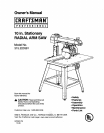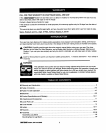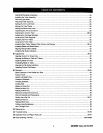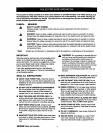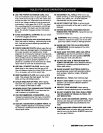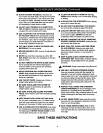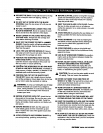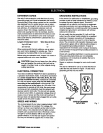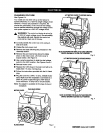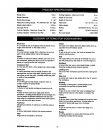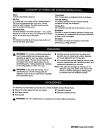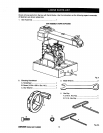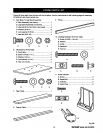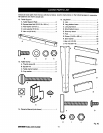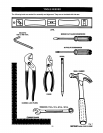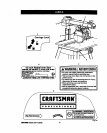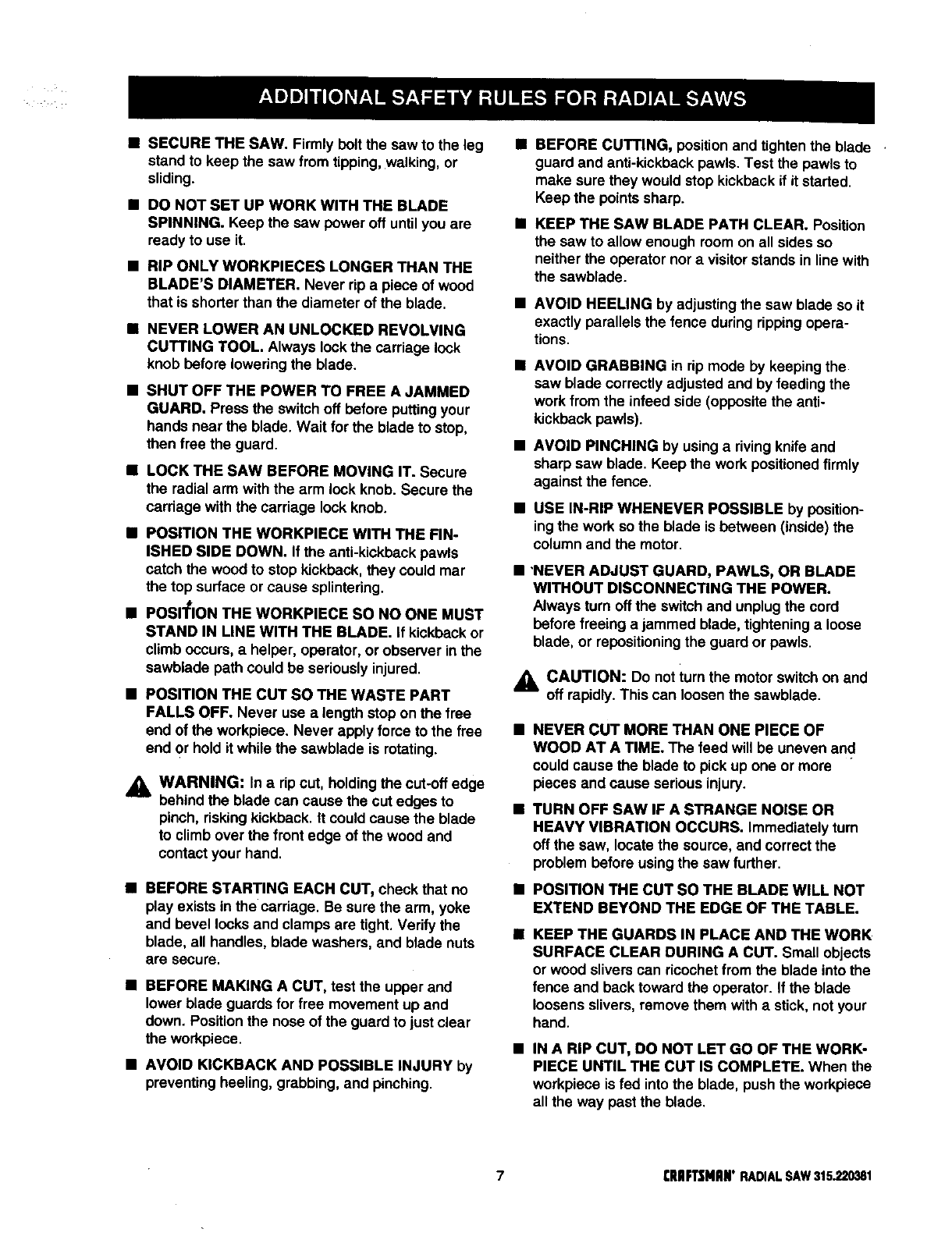
• SECURE THE SAW. Firmly belt the saw tothe leg •
stand to keep the saw from tipping,walking, or
sliding.
• DO NOT SET UP WORK WITH THE BLADE
SPINNING. Keep the saw power off untilyou are
ready to use it.
• RIP ONLY WORKPIECES LONGER THAN THE
BLADE'S DIAMETER. Never ripa piece ofwood
that is shorterthan the diameter ofthe blade.
• NEVER LOWER AN UNLOCKED REVOLVING
CUTTING TOOL. Always lockthe carriage lock
knob beforelowering the blade.
• SHUT OFF THE POWER TO FREE A JAMMED
GUARD. Press the switchoff before puttingyour
hands near the blade. Wait forthe bladeto stop,
then free the guard.
• LOCK THE SAW BEFORE MOVING IT. Secure
the radial arm with the arm lockknob. Secure the
carriage with the carriage lock knob.
• POSITION THE WORKPIECE WITH THE FIN-
ISHED SIDE DOWN. Ifthe anti-kickback pawls
catch the woodto stopkickback, theycould mar
the top surface or cause splintering.
• POSlI_ION THE WORKPIECE SO NO ONE MUST
STAND IN LINE WITH THE BLADE. if kickbackor
climboccurs, a helper, operator, or observer in the
sawblade path could be seriouslyinjured.
• POSITION THE CUT SO THE WASTE PART
FALLS OFF. Never use a length stop on the free
end ofthe workpiece. Never applyforce tothe free
end or hold itwhile the sawblade is rotating.
_i, WARNING: In a ripcut, holdingthecut-off edge
behindthe blade can cause the cutedges to
pinch,riskingkickback, tt couldcause the blade
to climbover the front edge ofthe woodand
contact your hand.
• BEFORE STARTING EACH CUT, check that no
play exists inthe carriage. Be sure the arm, yoke
and bevel locks and clamps are tight. Verify the
blade, all handles,blade washers, and blade nuts
are secure.
• BEFORE MAKING A CUT, test the upper and
lower blade guards for free movement up and
down. Positionthe nose ofthe guard tojust clear
the workpiece.
• AVOID KICKBACK AND POSSIBLE INJURY by
preventing heeling, grabbing, and pinching.
BEFORE CUTTING, position andtighten the blade
guard and anti-kickbackpawls.Test the pawls to
make sure they would stop kickbackifit started.
Keep the pointssharp.
KEEP THE SAW BLADE PATH CLEAR. Position
the saw to allowenough room on all sides so
neitherthe operator nora visitorstands in line with
the sawblade.
• AVOID HEELING by adjustingthe saw blade so it
exactly parallelsthe fence during rippingopera-
tions.
• AVOID GRABBING in ripmode by keepingthe
saw blade correctlyadjusted and by feeding the
work from the infeed side (oppositethe anti-
kickbackpawls).
• AVOID PINCHING by usinga rivingknife and
sharpsaw blade. Keep the work positionedfirmly
againstthe fence.
• USE IN-RIP WHENEVER POSSIBLE byposition-
ingthe work sothe blade is between (inside)the
columnand the motor.
'NEVER ADJUST GUARD, PAWLS, OR BLADE
WITHOUT DISCONNECTING THE POWER.
Always turn offthe switchand unplugthe cord
before freeing a jammed blade, tighteninga loose
blade, or repositioningthe guard or pawls.
_k CAUTION: Do not turnthe motorswitch on and
offrapidly. Thiscan loosen the sawblade.
NEVER CUT MORE THAN ONE PIECE OF
WOOD AT A TIME. The feed will be uneven and
could cause the blade to pick up one or more
pieces and cause seriousinjury.
TURN OFF SAW IF A STRANGE NOISE OR
HEAVY VIBRATION OCCURS. Immediately turn
offthe saw, locate the source, and correctthe
problembeforeusing the saw further.
POSITION THE CUT SO THE BLADE WILL NOT
EXTEND BEYOND THE EDGE OF THE TABLE.
KEEP THE GUARDS IN PLACE AND THE WORK
SURFACE CLEAR DURING A CUT. Small objects
or wood sliverscan ricochetfrom the blade intothe
fence and backtoward the operator. Ifthe blade
loosens slivers, remove them with a stick,not your
hand.
IN A RIP CUT, DO NOT LET GO OF THE WORK-
PIECE UNTIL THE CUT IS COMPLETE. When the
workpiece isfed intothe blade, pushthe workplace
all the way past the blade.
7 CRIIFI"SNIIN'RADIALSAW315.220381



